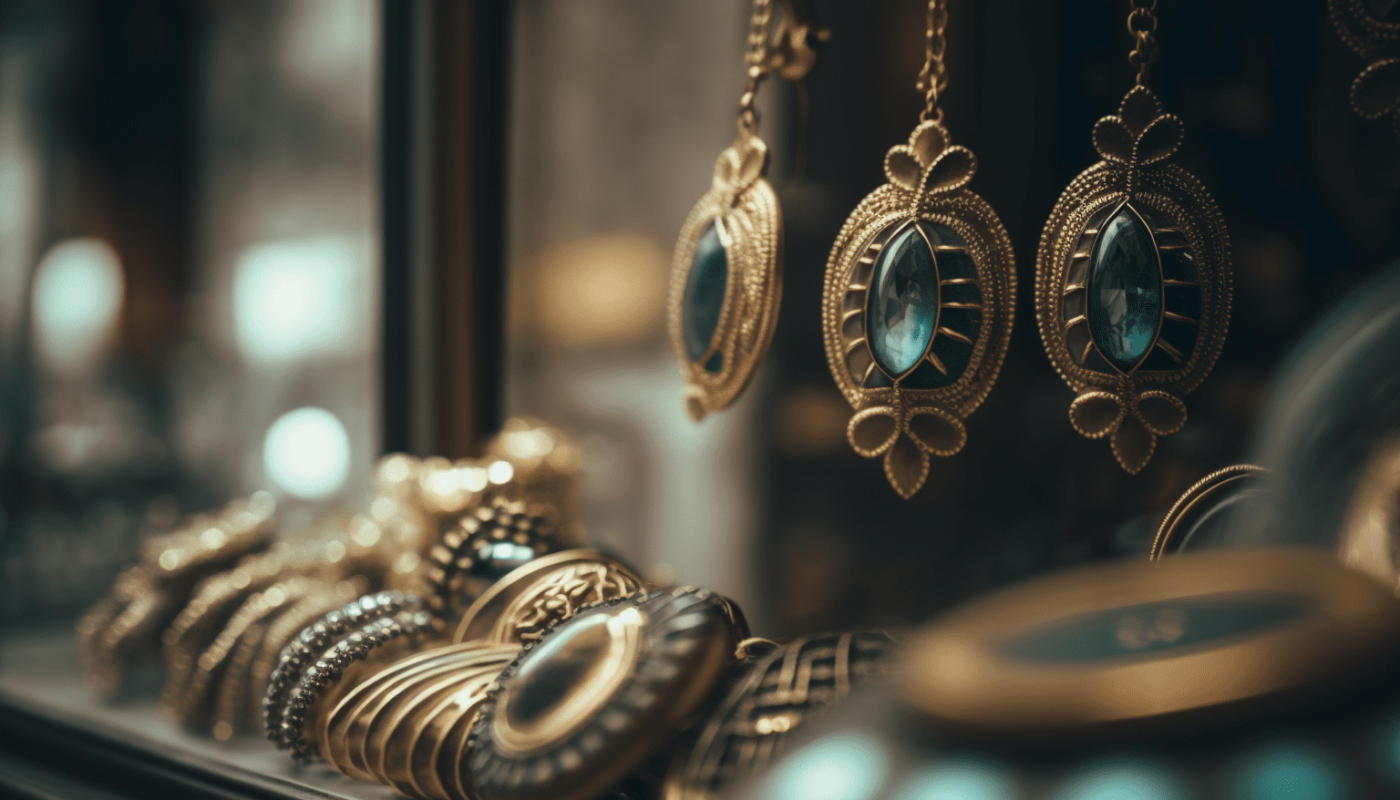In the world of investments, real estate has long stood as a sturdy pillar, promising stability, value appreciation, and tangible wealth. On the other hand, jewelry, with its dazzling diamonds, glimmering gold, and scintillating gemstones, has been perceived more as an emblem of luxury than a strategic asset. However, this perspective is evolving. When meticulously chosen, jewelry not only adorns but also acts as a formidable asset, capable of augmenting a real estate-centric portfolio. Delving deeper, we’ll discover the symbiotic relationship between these seemingly disparate investments.
The Intersection of Jewelry and Real Estate
Delving deeper into the realms of real estate and jewelry, it’s evident that these two distinct assets share more than just the label of being ‘tangible.’ The grandeur of a sprawling mansion can be likened to the detailed craftsmanship of a diamond tiara. Both, in their essence, capture the human desire for permanence and legacy. This isn’t just about bricks or gemstones; it’s about the very fabric of human aspiration – to be remembered, to leave behind something lasting. Even as real estate represents the physical spaces we inhabit and the territories we conquer, jewelry reflects the intimate, personal milestones we cherish. Together, they encapsulate a narrative of human achievement, a tale of where we live and how we choose to celebrate our lives. When one ponders upon the legacy they wish to leave behind, it often oscillates between the homes they’ve built and the heirlooms they pass on.
The Value of Tangible Assets
In a world increasingly shifting towards the ethereal – from cloud storage to cryptocurrency – there remains a steadfast appeal for what can be physically held. There’s an undeniable comfort in the weight of a gold necklace or the solid walls of one’s home. These tangible assets anchor us amidst the capricious tides of digital markets. As more of our lives become enveloped in the virtual realm, a counter-movement emerges, emphasizing the value of the palpable. Real estate, standing tall against the winds of change, reminds us of the world’s constancy. Similarly, jewelry, often passed down through generations, speaks of stories, memories, and eras gone by. These tangible assets, therefore, are not just financial bastions but emotional touchstones. They don’t merely represent fiscal prudence but underscore a deeper, intrinsic human need to connect with the material world in an age of increasing digital abstraction.
Diversification Beyond Property
In the dynamic world of investments, where market fluctuations can have immediate impacts on portfolio values, real estate has long stood as a reliable foundation. However, the mantra for today’s seasoned investor is diversification. By expanding their portfolio beyond just property, investors can shield themselves from potential downturns in one specific sector. Within this framework of diversification, jewelry, especially those made of precious metals and gemstones, has emerged as a promising contender. Unlike real estate, which can sometimes be tethered to localized economic conditions, jewelry often operates on a different price spectrum. This means that even if the real estate market faces a slump, the value of certain jewelry pieces could either remain stable or even see an upswing, acting as a safety net. Thus, incorporating jewelry into an investment portfolio offers a harmonious blend, ensuring that the portfolio retains its luster regardless of broader economic conditions.
Jewelry as a Store of Wealth
Jewelry’s value extends beyond its shimmering exterior. Throughout various civilizations and eras, it has symbolized affluence, power, and prosperity. But beyond its symbolic significance, jewelry has served as a tangible repository of wealth. Families have entrusted their stories, legacies, and assets into these precious pieces, passing them down through the annals of time. As these pieces age, their value often escalates, especially if they possess unique characteristics, historical connections, or come from a particular period of artistic brilliance.
In moments of economic turbulence, where liquid assets can quickly depreciate, jewelry stands resilient, echoing the steadiness of prime real estate. The inherent advantage of jewelry’s size also means that it can be effortlessly stored, moved, or even sold, making it a versatile asset that provides a quick avenue for liquidity when needed. For more information on the historical significance and investment potential of jewelry, you can refer to resources provided by reputable jewelry industry associations such as the Gemological Institute of America.
Choosing the Right Pieces
Venturing into the realm of jewelry as an investment requires a keen eye and astute judgment. It’s not sufficient to be swayed by the sheer beauty of a piece. Instead, an investor should approach this with the same rigor and scrutiny as they would when selecting a piece of real estate. Recognized brands or esteemed artisans are often the first checkpoint, ensuring that the piece in question is authentic and of the highest quality. Delving deeper, pieces that hold a vintage charm, belong to a limited edition collection, or have a compelling backstory rooted in history can command a premium in the market. Being adept at discerning such nuances, staying informed about market trends, and soliciting insights from jewelry experts can guide an investor towards acquisitions that are not only a feast for the eyes but also promise robust financial returns.
Preserving and Protecting Your Jewelry Investments
- Investment Maintenance:
- Regular Care: Just like any other valuable asset, your jewelry requires consistent attention. This ensures that it remains in optimal condition, free from tarnish, scratches, or other damages.
- Avoiding Harmful Elements:
- Chemicals: Exposure to everyday chemicals, from chlorine in swimming pools to perfumes, can tarnish or damage jewelry. Always wear jewelry after applying makeup, perfume, or lotions.
- Sunlight: Extended exposure to direct sunlight can cause certain gemstones to fade or discolor.
- Extreme Temperatures: Drastic temperature changes can be harmful to certain gemstones and metals. It’s wise to avoid wearing jewelry in situations where they might be exposed to significant temperature swings.
- Professional Assistance:
- Periodic Cleaning: Over time, dirt and grime can accumulate on jewelry, diminishing its shine. Rely on professionals for periodic cleaning, ensuring that the pieces remain vibrant and the gemstones remain secure in their settings.
- Inspections: Just like how properties undergo inspections to identify potential issues, periodic check-ups by a jeweler can identify loose settings, worn prongs, or other potential problems.
- Storage Solutions:
- Proper Storage: Jewelry should be stored in a cool, dry place. Velvet-lined jewelry boxes or individual pouches can prevent scratches and other potential damages.
- Organization: To prevent tangling or scratching, each piece should ideally have its separate compartment or pouch. For necklaces and chains, hanging storage can prevent them from becoming knotted.
- Insurance:
- Protect Against Loss: Accidents happen. Whether it’s theft, damage, or loss, having your jewelry insured can provide peace of mind.
- Regular Appraisals: Jewelry’s value can fluctuate based on market conditions. Regular appraisals ensure that the insurance coverage accurately reflects the piece’s current market value, similar to how prime properties are periodically assessed to determine their market worth.
Finally, we recommend that you read our article, where we talked about finding the perfect home for your jewelry collection.
FAQ
The evolving perception of jewelry as more than just a luxury item, but also a strategic asset.
The role of tangible assets in grounding investment portfolios and providing emotional connections in a digital age.
The importance of diversification and how jewelry, with its unique characteristics, can complement real estate investments.

